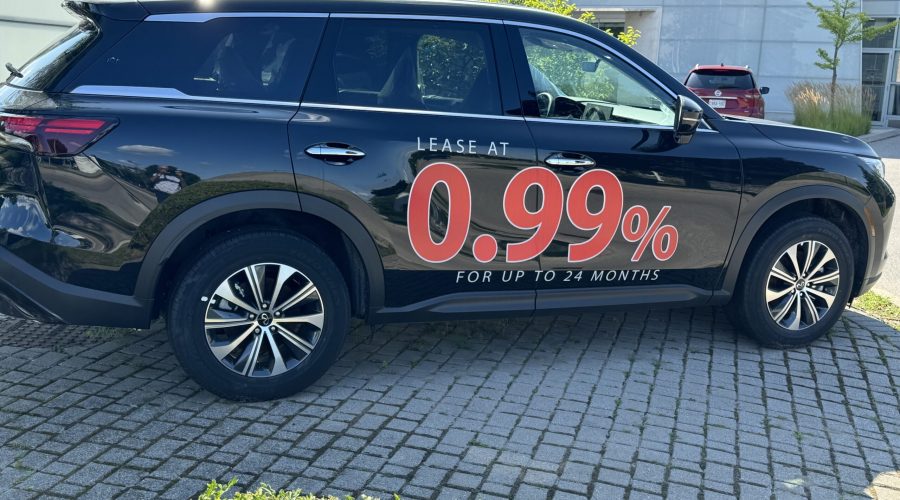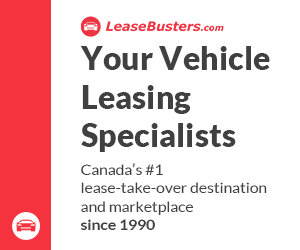The majority of retail vehicle leases in Ontario are Closed End Leases with Purchase Options. In fact, all but one or two OEM captive leasing companies (those affiliated directly with car manufacturers) only offer this kind of lease.
A Closed End Lease is essentially a “walk away” lease — meaning the lessee is not responsible for the vehicle’s residual value at lease-end and isn’t affected by the vehicle’s future market value. Instead, the lessee simply returns the vehicle and walks away, provided the car is in acceptable condition and within the allowed kilometre limit.
Of course, that’s not a free pass. Lessees are responsible for the condition and odometer reading of the vehicle. You will be penalized for excess wear-and-tear and over-kilometre usage. But market depreciation? That’s not your problem.
However, some independent leasing companies — particularly those outside of the manufacturer networks — still offer what’s known as an Open-End Lease or Residual Obligation Lease. This is where things get tricky.
At LeaseBusters, this type of lease becomes a burning issue when a LeaseBusters Leasing Specialist works with a seller who holds an Open-End Lease. Often, the seller has no idea what their actual lease-end financial responsibility might be. And that’s a problem.

Here’s the core challenge:
Many lessees are never clearly told — at the time of lease signing — that they’re entering into an Open End Lease with residual liability.
When that happens, confusion (and sometimes conflict) is inevitable at lease-end.
But there’s good news. Ontario’s Consumer Protection Act has your back — and the law is very clear on what can and can’t happen at the end of an Open-End Lease.
Open End Leases – Maximum Liability of the Lessee in Ontario
What the Law Says:
Section 90(2) of the Ontario Consumer Protection Act (2002) states:
“The maximum liability of the lessee at the end of the term of a residual obligation lease after returning the leased goods to the lessor shall be the amount calculated in the prescribed manner.”
(2002, c. 30, Sched. A, s. 90 (2); 2004, c. 19, s. 7 (34))
What That Means in Plain Language:
If you’re the lessee (the person leasing the vehicle) and your lease is a residual obligation lease (aka open-end lease, where you’re responsible for the vehicle’s value at lease end), then:
- When the lease ends and you return the vehicle, you’re not on the hook for unlimited charges if the car is worth less than the residual value.
- Your liability is capped up, there’s a prescribed formula that limits how much you can be charged.

How Is the Lessee’s Liability Calculated?
The regulation refers to the “prescribed manner” this is found in Ontario Regulation 17/05 under the CPA.
For residual obligation leases, it says the lessee’s maximum end-of-lease liability is the difference between:
- The residual value stated in the lease
- MINUS
- The actual wholesale value of the vehicle at lease end (as determined reasonably, often by third-party auction or appraisal)
This means the most the leasing company can charge the consumer is the shortfall between the residual and what the car is actually worth wholesale at lease end — not retail, and not an inflated estimate.
Example:
- Residual Value in lease contract: $20,000
- Actual wholesale market value of returned car: $17,000
- The lessee may be liable for a maximum of $3,000.
They cannot be charged for retail losses or be penalized beyond that unless excess wear-and-tear or mileage charges apply — which are usually separate from residual obligation liability.
Important Notes:
- This only applies to open-ended leases (residual obligation leases).
- Most consumer car leases in Ontario are closed-end leases (no residual obligation to lessee), but some commercial or non-standard leases can be residual obligation leases.
- Lessees must receive clear disclosure up front if their lease includes residual risk.
The 3-Month Payment Cap – Explained:
If a consumer lease is a residual obligation lease and there is a shortfall at lease-end (i.e., the wholesale value of the vehicle is less than the stated residual), then:
- The lessee’s maximum liability is limited to the equivalent of three-monthly payments.
This is regardless of how large the shortfall might be.
Source: Ontario Regulation 17/05 – General, under the Consumer Protection Act, 2002
Here’s the relevant section from O. Reg. 17/05, Section 50(2):
“The lessee’s maximum liability under a residual obligation lease is limited to an amount equal to three periodic payments under the lease if the lessee has returned the leased goods in good condition and has complied with the terms of the lease.”
Conditions That Must Be Met:
- The lessee returns the vehicle in good condition, with no excess wear and tear.
- The lessee complies with all other terms of the lease agreement (e.g., mileage limits).
- The shortfall between the residual and wholesale value is not due to damage, misuse, or over-mileage.
If these are satisfied, then:
Lessee’s maximum financial responsibility is 3 lease payments.
Example Scenario:
- Monthly lease payment: $599
- Residual value: $22,000
- Actual wholesale value at return: $18,000 (shortfall of $4,000)
Under normal open-end terms, the lessee would owe $4,000 — BUT under Ontario law, they cannot be charged more than 3 x $599 = $1,797 (assuming the vehicle is in good condition and lease terms were followed).
Important Notes:
- This only applies to leases defined as “residual obligation leases.” Most mainstream consumer leases in Ontario are closed-end, where the lessee has no liability for the residual at all.
- If a lease does not clearly disclose that it is a residual obligation lease, it will be treated as closed-end under the CPA, giving full residual protection to the consumer.
- Dealers and lessors must disclose this liability clearly in writing in the lease agreement.
James Matthews is the President, General Manager and Co-Founder of LeaseBusters. James launched LeaseBusters in 1990 and is considered one of Canada’s leading experts on new vehicle leases, lease-take-overs and vehicle lease (re)marketing. James can be reached directly at jmatthews at leasebusters.com







